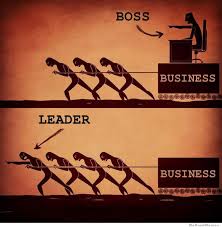Great organizations – for profit and community benefit, alike – have figured out that the key to success boils down to one thing…highly engaged employees.
If you want to fuel growth and success in your nonprofit, you too should focus on employee engagement. In order to do that, you need to communicate these six things to your people on an ongoing basis.
1. The vision
If you want people to follow you, they need to understand the vision. They need to know that they’re working toward something greater than themselves, and even greater than you (although I’m sure you’re great!).
Your team needs to know they’re heading in the right direction. As the leader, it’s your job to set the direction and communicate what the desired future reality looks like. It’s only at that point they can fully embrace where you want to take them and the organization, and how their work helps make that vision possible.
2. Your expectations of them
People want to be successful. And most people are willing to work hard to achieve success. But without direction, people will spin their wheels trying to figure out what it is you want or need them to do. If you want people to meet and exceed your expectations, you’ve got to outline those clearly. And when someone strays from your expectations, you need to address it immediately. Not a week later. Not a few months later. And certainly not nine months down the road during their annual performance review. Immediate corrective feedback will help your staff correct behaviors, re-focus on your expectations, and deliver consistently.
3. You appreciate them
Don’t be stingy with appreciation. Nothing good can come of that. Take every possible opportunity to celebrate your peoples’ successes. Appreciate them publicly in front of their colleagues, your peers, and even your board members. You’d be amazed at how far that kind of authentic recognition goes with an employee.
But don’t stop there. Frank Blake, CEO of Home Depot, was famous throughout the organization for writing authentic thank you letters to employees. I’m not talking about the generic, “thanks for doing a great job” type of notes. No. Every week he’d walk the floor at different Home Depot stores looking for employees who were doing things that delighted customers. When he saw something worth celebrating, he’d make a note of it. Each week he’d write more than 100 thank you notes to Home Depot employees to show appreciation for the great work they were doing.
Find ways to do something authentic like Frank did, and you’ll be amazed at the impact it has on morale and engagement across your entire staff.
4. How you’re going to help them solve the problem
Notice I didn’t say how you’re going to solve the problem. It’s not about you taking their challenges away and dealing with them so they don’t have to. However, your employees need to know that you care, you’re invested, and you’re willing to step in and support them as they endeavor to get things done in your organization.
They need to know that when challenges arise, you’ll be there to help remove roadblocks, provide guidance and support, and if need be, you’ll stand beside them and work just as hard as they are to achieve the goal.
As a leader, they need to see you leading the charge, not just standing on the sideline giving direction. If that’s all you’re capable of, you’re just a boss. And few people choose to follow bosses for long
5. That you’re sorry
The three most powerful words in any relationship are, I am sorry. When you do something that hurts another person (especially a subordinate), you can’t repair and maintain a healthy relationship without saying those words. For leaders, sometimes this is really difficult. We have a hard time admitting our failures — maybe we think it makes us look weak. Maybe we just don’t like being wrong. But none of that matters. If we can’t own our failures and step up when we make mistakes, we don’t deserve to lead.

[…] Increasing nonprofit employee engagement: 5 tips for success […]